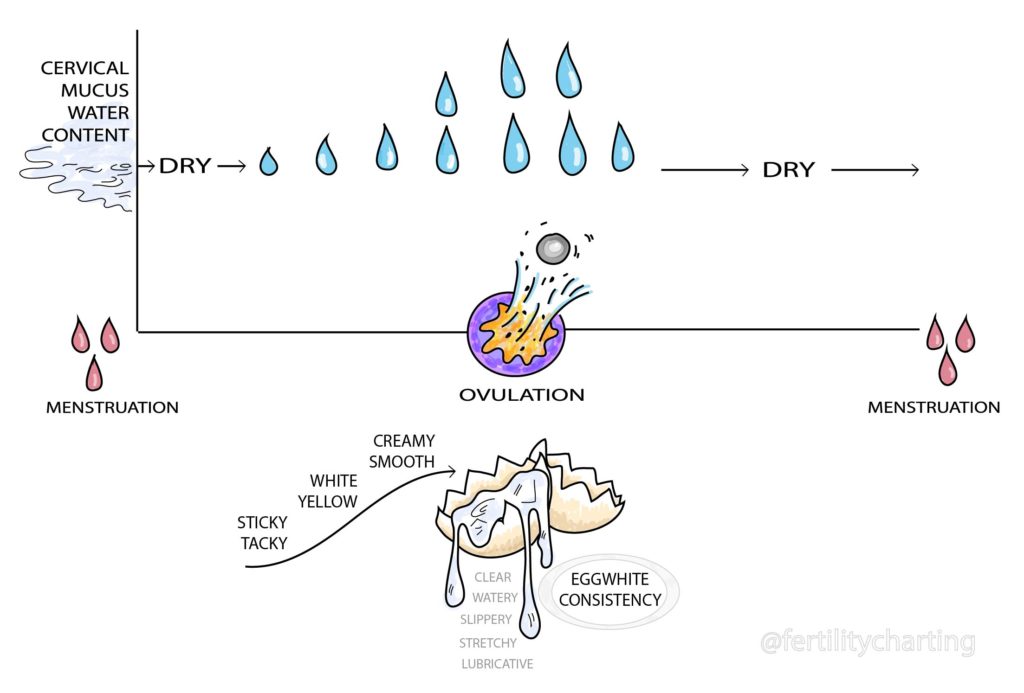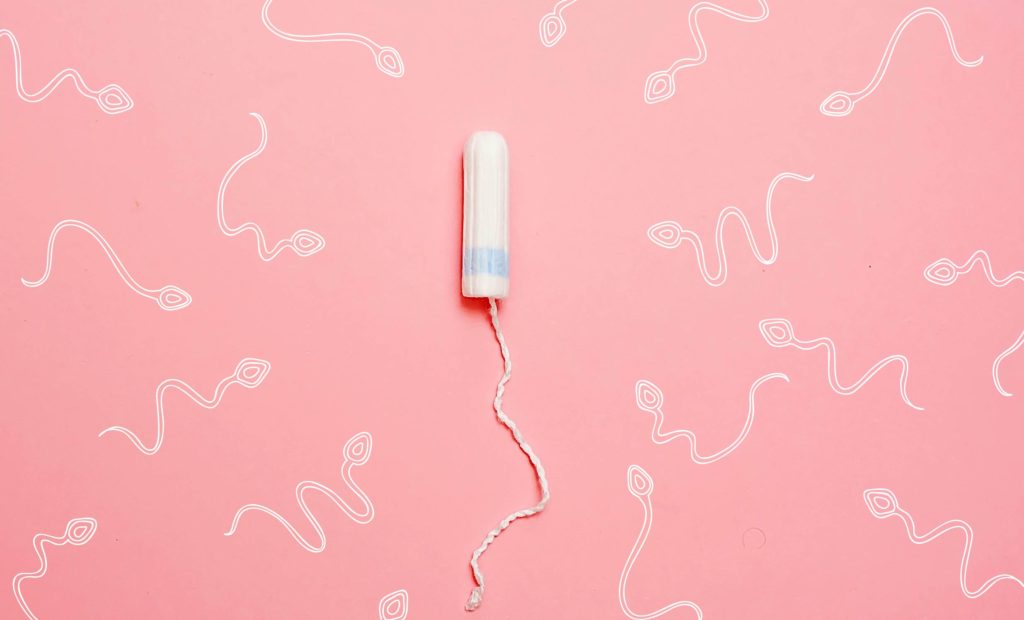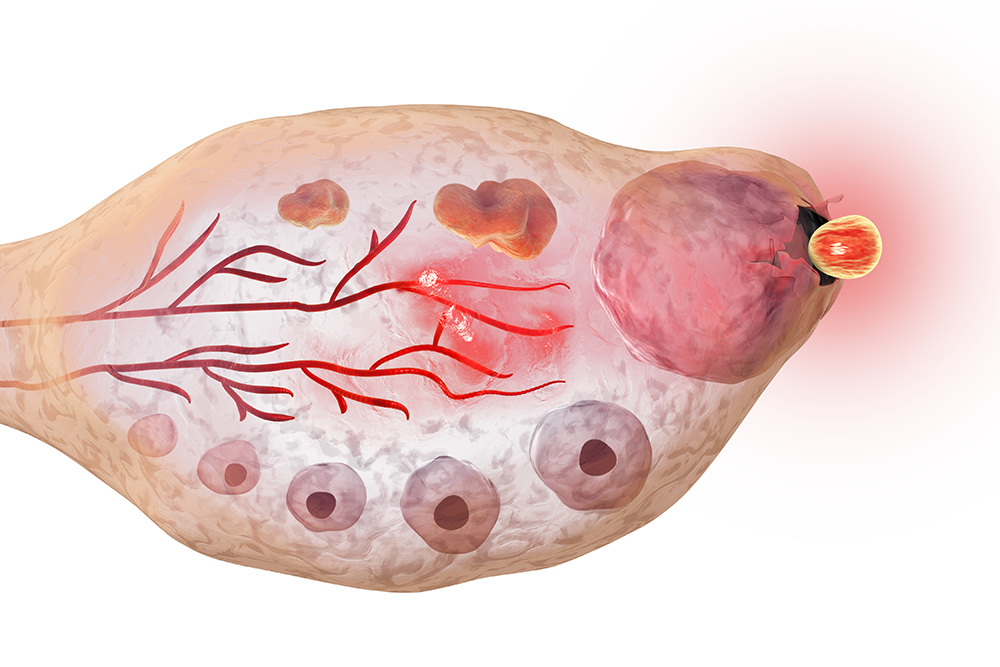- skin cells that slough away from the vaginal wall,
- healthy cervical mucus created by special crypts within your cervix
- discharge caused by infection or disease
This article is concerned with cervical mucus (sometimes known as cervical fluid). Cervical mucus is technically a type of vaginal discharge (albeit, a very healthy one!). Cervical mucus is created by special crypts that line the inside of your cervix (your cervix is the bottom third of your uterus and is a thick, muscular tube that connects the inside of your uterus with the upper portion of your vaginal canal).
You’ve probably encountered cervical mucus before even if you weren’t actually aware of it at the time. You may have occasionally or frequently seen cervical mucus dried in the crotch of your undies, on the toilet tissue after you wipe, or even dangling out of you in a long string as you sit on the toilet after a bowel movement.
Tracking cervical mucus is a key part of most modern Fertility Awareness-Based Methods (FABMs), because the consistency of cervical mucus changes in response to different levels of oestrogen and progesterone.

Cervical fluid is a normal, natural, HEALTHY bodily function. And when I say the word “function” I mean it has a very specific purpose! It also follows a very predictable pattern of changes that align with specific phases of your menstrual cycle. If this is news to you, you’re not alone – unfortunately the vast majority of women have no clue about this incredible substance and the way it changes in response to different hormones. In fact, many women assume that they have recurring vaginal infections when they notice cervical mucus, and then resort to unnecessary douching and feminine washes in a misguided attempt to “clean” themselves. (On a side note: I do hope that everyone reading this is aware of the detrimental effect that douches and feminine washes can have on the natural pH level of your vagina).

The primary purpose of cervical mucus is to protect, nourish, transport and filter … SPERM! And seeing as the female body only ovulates once in a single menstrual cycle, there’s no point in producing highly fertile cervical fluid for the entire month. Instead, cervical fluid increases in water content as your oestrogen levels rise the closer you get to ovulating. A typical transition could see your cervical fluid move from:
- None at all after your period ends (dry), to
- Sticky/tacky/moist, to
- Creamy/smooth/white/wet, to
- Slippery/stretchy/clear/lubricative (consistency of raw eggwhite), to
- Watery, to
- Dry again

Lubricative cervical mucus of a consistency similar to raw eggwhite is considered the most fertile. For some people, the water content of this fluid is so high that they can no longer pick it up, and it simply appears like very watery, slippery fluid. After ovulation, your cervical fluid usually dries up for the rest of your cycle. It’s important to note that if you are using the Symptothermal Method of contraception, all cervical fluid prior to ovulation should be considered fertile. Yes, some types are (far) more fertile than other types, but in the follicular phase under the influence of oestrogen, they can all be hospitable to sperm. Don’t be fooled into thinking that you can only get pregnant when you’re experiencing cervical fluid that looks like raw eggwhite (although it is more likely).

Let’s break down the four key functions of cervical mucus. Join the conversation!
PROTECT: Cervical mucus is alkaline. Your vagina is acidic. Sperm cannot survive in the naturally acidic pH of the vagina – in fact, in the absence of cervical mucus, your vagina is a bit of a sperm-killing machine! Cervical fluid provides a nice, safe alkaline substance to protect sperm from what would otherwise be an inhospitable environment inside your vagina.

NOURISH: Cervical mucus contains fructose which is an energy source for sperm. Sperm can survive on average up to 5 days (but on some occasions longer) in highly fertile cervical mucus.
TRANSPORT: The microscopic structure of cervical mucus is fascinating stuff. In the follicular phase of your cycle as your oestrogen levels rise in the lead-up to ovulation, the structure of your cervical mucus transitions to provide easier navigation for sperm. At its most fertile (when it appears as raw eggwhite), the mollecular structure of your cervical fluid mimics “swimming lanes” that allow for easy passage of sperm. In the luteal phase of your cycle under the influence of progesterone, your cervical fluid has a very impenetrable mollecular structure that creates a “plug” of sorts in the cervix to keep any further sperm out.

FILTER: The molecular structure of “swimming lanes” in highly fertile cervical fluid also serves to filter out any sperm of low motility or abnormal morphology. Any sperm that are swimming sideways or backwards get trapped on the edges of the “swimming lanes” and in this way your cervical fluid is actively filtering out low quality sperm in favour of the strongest swimmers!

How impressive is that? Your cervical fluid literally protects, nourishes, transports and filters sperm. For so many people, this is a completely foreign concept. Plus, if you are on hormonal contraception you won’t see this transition of cervical fluid as your body is not cycling naturally through the normal reproductive hormones each month – in fact, many contraceptive methods work (in part) due to the way they thicken your cervical mucus and therefore create an impenetrable barrier for sperm.
So, spread the word. Because you never know which of your friends is out there freaking out over this weird vaginal discharge that looks like someone cracked an egg in their undies!
*Want to see photos of real-life cervical fluid from other women? Check out The Cervical Mucus Gallery – an educational gallery of real pictures of cervical fluid!
*Want to see what a cervix looks like? Head to The Beautiful Cervix project to find out!




